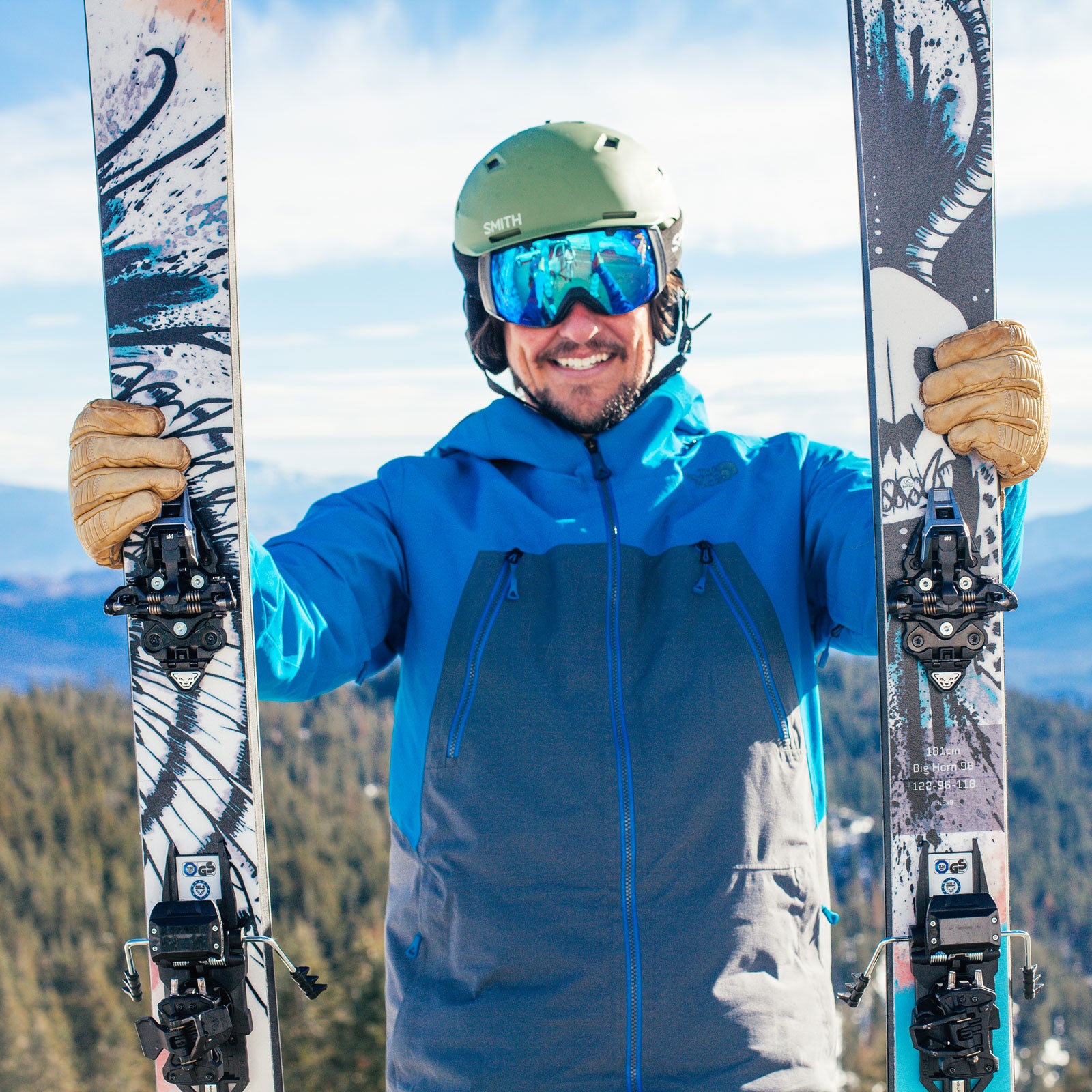I started kicking around the idea of committing to one ski for an entire season after reading Eben Weiss’s hilarious “A New Year’s Resolution to Commit to Bike Monogamy” a year ago. Like his bike collection, my ski quiver is vast—and time-consuming to maintain. I cringe to think of the hours I’ve devoted over the years to tinkering with bindings or chasing down specific skins for specific skis. After finishing Weiss’s article, I began obsessing over the options for a single ski that could do it all, ultimately deciding to go with the quiver-killing Sego Big Horn 96 ($799).
Of all the skis I’ve owned, this utility player is the most capable in the widest range of conditions. I’ve bombed GS turns down groomers comfortably, thanks to the cambered ski’s ability to hold an edge, been impressed with how well the stiff poplar core and triaxial fiberglass laminate allowed it to hammer through crud, and loved how playful these skis are in three to five inches of new snow. The Big Horn doesn’t deliver the surfy experience of my DPS Wailer 112 in pow, and I’d always assumed it wouldn’t be that fun in deeper (and by virtue of where I live, wetter) stuff because of its relatively slim 96-millimeter waist. Boy, was I wrong. On a powder day last week, they excelled in about a foot of fresh Pacific Northwest concrete. The ample rocker up front brought the skis above the wet pow for a nice float, and the tail rocker made turning quickly in the thick snow a breeze. After that I declared to my buddies that it was official: the Big Horn is the most fun ski out there.

On top of remaining both playful and capable on- and off-piste, it hits the sweet spot for both backcountry and resort skiing. At right around 4.5 pounds per plank, the Big Horn isn’t unwieldy when I’m skinning uphill but still has plenty of stability-promoting heft when I make turns in the conditions that can be expected on most days in the backcountry (ice to corn, light pow to thick slush).
I also love the down-home feel of Sego. The brand, based in Victor, Idaho, has six employees and makes about 1,000 pairs of skis a year at the rate of about three per day, all in-house. It was started in 2014 by brothers Tim and Peter Wells, who were working in finance and at Alta ski resort in Utah, respectively. Five seasons later, Tim still handles the business side of things, while Peter builds the skis. In spite of the small staff, someone in the factory will always answer the phone. One of my friends bought the Big Horn 106s and spent nearly half an hour discussing where to mount them with someone working in the factory.
At the end of the day, I’m thankful that I own a number of different skis, as this allows me two spice things up by grabbing a different pair almost every time I go out. But if I had to pick “the one” for the rest of my life, the Big Horn 96 would be it.

